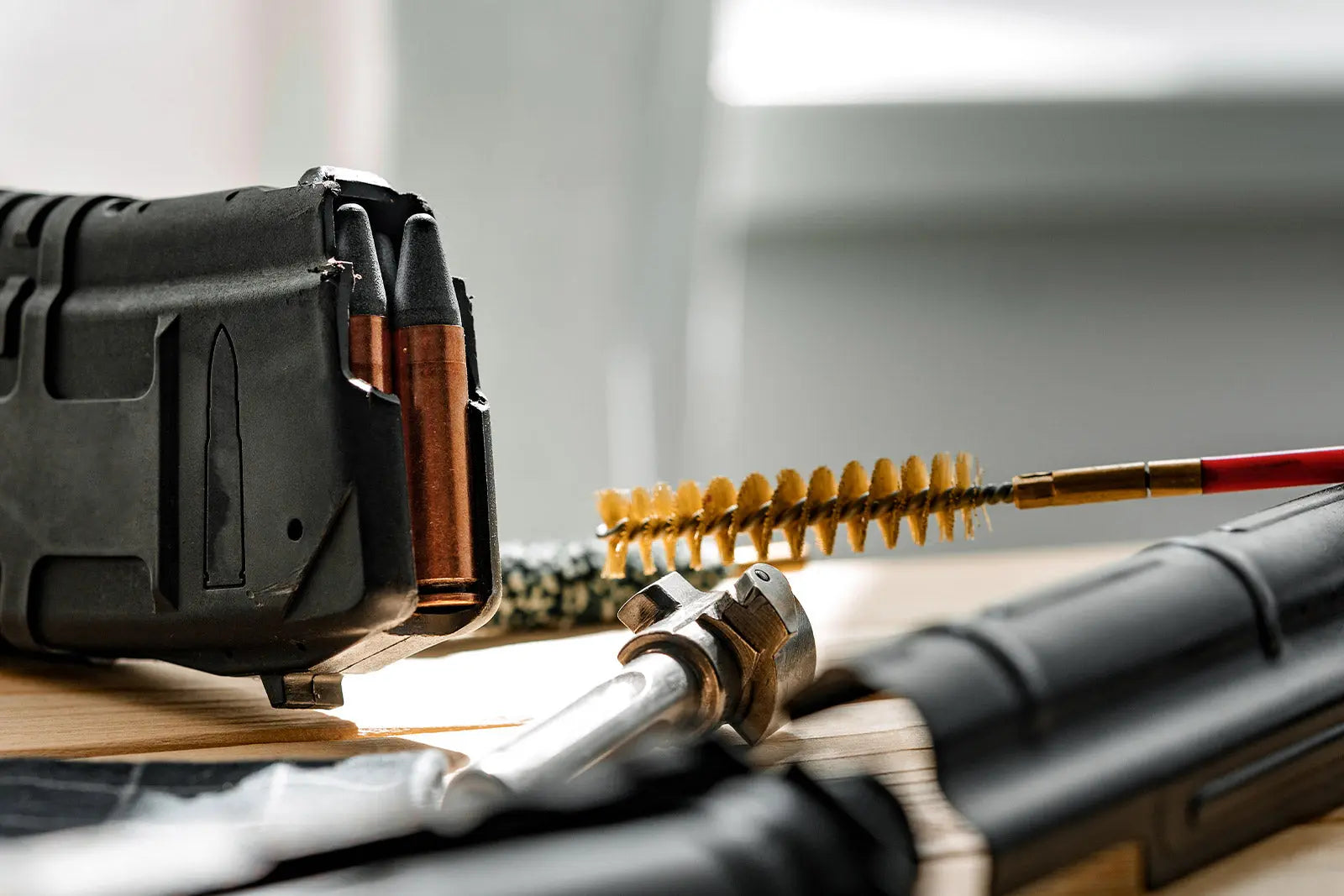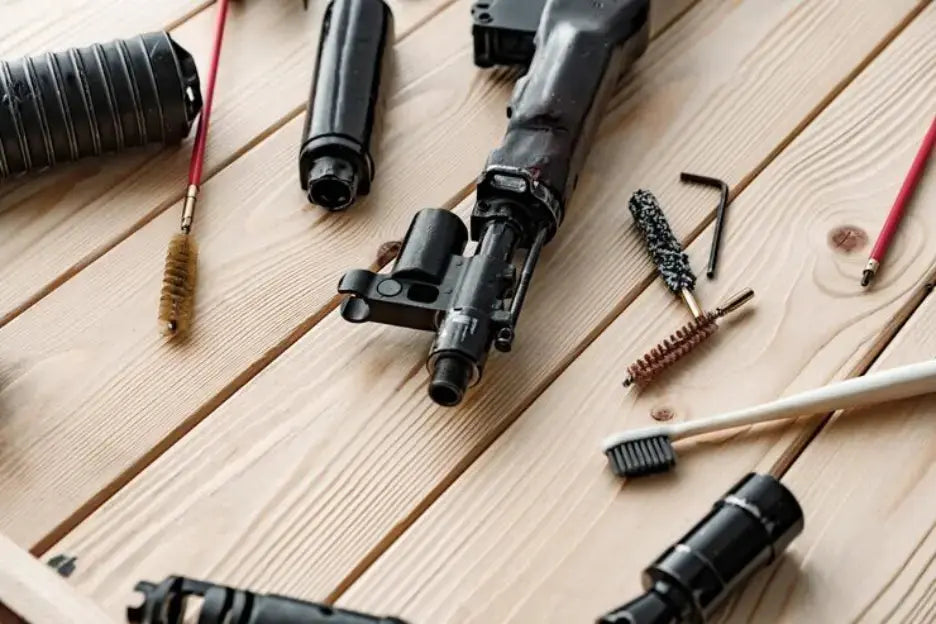Owning a firearm comes with significant responsibilities, and ensuring its safety and performance through regular gun inspections is a vital aspect of responsible ownership. Routine inspections not only help in maintaining the firearm’s functionality but also play a crucial role in safety, preventing potential malfunctions that could lead to dangerous situations. A comprehensive inspection process includes checking for wear and tear, assessing the condition of the barrel and action, and recognizing the importance of cleaning. A gun cleaning kit can serve as an invaluable tool during these inspections, helping ensure your firearm remains in optimal condition.
Checking for Wear and Tear
Over time, repeated use can cause parts of your firearm to degrade, leading to potential malfunctions. Key areas to inspect include the slide, frame, grips, and all moving parts. Look for any signs of rust, corrosion, or pitting that could weaken the firearm's structural integrity. Ensure all screws and pins are secure, as loose components can affect accuracy and safety. Examine the magazine for dents or damage, which can result in feeding issues, and check the springs for tension loss, as weakened springs can cause cycling problems. Familiarize yourself with the normal wear patterns of your specific firearm model, so you can distinguish between normal and excessive wear.
Assessing the Condition of the Barrel
The barrel of your firearm plays a pivotal role in accuracy and overall performance, requiring meticulous inspection. Begin by using a bore light to examine the interior for any fouling, rust, or damage. Pay special attention to the rifling, as wear in this area can drastically affect your firearm's accuracy.
Check the muzzle crown for any dings, burrs, or other damage that could alter bullet trajectory. These imperfections may seem minor but can lead to significant deviations in your shot placement. When cleaning the barrel, always use the appropriate tools from your gun cleaning kit to avoid scratches or other damage.
Additionally, inspect the barrel for any signs of swelling or bulging, which could indicate previous overpressure events. Such deformities can compromise the structural integrity of the barrel, making it unsafe to use. Be thorough in your examination, as issues in the barrel can often be subtle yet critical.
Rotate the firearm and view the barrel from different angles to catch any hidden imperfections. By maintaining a rigorous inspection routine for the barrel, you ensure the reliability and safety of your firearm, keeping it in peak operational condition.
Evaluating the Action
The action of a firearm is critical for loading, firing, and ejecting cartridges, so it's essential to give this area a meticulous inspection. Begin by examining the bolt, breech, and firing pin for cleanliness and smooth operation. Any dirt, debris, or build-up in these areas can cause misfires or jams. Ensure the firing pin moves freely and inspect it for signs of wear or damage.
Check that the bolt locks securely into place and look for any wear or cracks in the locking lugs, as these can pose serious safety risks. Ensure all springs within the action retain their tension and have no signs of fatigue. Lubrication is vital for the action’s smooth performance; however, be cautious not to over-lubricate, which can attract dirt and debris.
Carefully inspect the extractor and ejector mechanisms to ensure they function properly and show no signs of wear or damage. Any malfunction in these components can result in failures to eject spent cartridges, disrupting the firearm’s operation. Use appropriate tools from your gun cleaning kit to clean and maintain the action components, paying close attention to manufacturer recommendations for your specific firearm model. Regular, detailed inspections of the action will help ensure your firearm operates safely and reliably.
The Importance of Cleaning Your Firearm
Keeping your firearm clean is essential for maintaining its performance and longevity. Residue from gunpowder, metal fouling, and other debris can build up over time, causing corrosion and affecting the firearm’s reliability. Consistent cleaning helps prevent these issues and ensures that your firearm is always ready for use.
Using a comprehensive gun cleaning kit, make sure to clean all components thoroughly. The process removes harmful residues that could otherwise lead to jams or misfires. Pay attention to the manufacturer’s guidelines for cleaning, as improper methods or tools can cause damage.
In addition to preserving your firearm's functionality, regular cleaning allows you to gain a better understanding of its mechanisms. This familiarity can be invaluable in identifying any minor issues before they become major problems. Lubricating moving parts during cleaning ensures smooth operation and reduces wear and tear.
The Cleaning Process as an Inspection Opportunity
Cleaning your firearm is more than just a routine task—it's an essential opportunity for inspection. As you disassemble your gun for cleaning, take the time to closely examine each part for any signs of wear or damage. This meticulous approach ensures that even the smallest issues, like worn springs or pins, are identified and addressed before they can escalate into major problems.
Pay special attention to components that are prone to dirt and grime buildup, such as the bolt, breech, and firing pin. Use your gun cleaning kit to clean these parts thoroughly, and inspect them for any signs of rust or corrosion. Lubricate moving parts as needed, following the manufacturer's guidelines to ensure smooth operation and reduce wear and tear.
During this process, take note of any changes in the condition of your firearm's components. Keeping a detailed record of your cleaning and inspection activities can help you track the firearm’s performance over time and assist in preventive maintenance. This documentation can be invaluable, providing insights into recurring issues or patterns of wear that may require professional attention.
Inspect the barrel carefully during cleaning, using appropriate tools to avoid causing any damage. Check the rifling and muzzle crown for any imperfections that could affect accuracy. Similarly, scrutinize the action components to ensure they function correctly and show no signs of wear or damage.





